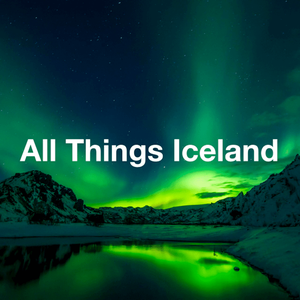
All Things Iceland
Jewells Chambers
Discover Iceland's language, history, culture, & nature
- Bickering Icelandic Siblings Seal Their Fates With Magic – Folklore Friday
This is part of my Folklore Friday Series, where I am sharing an Icelandic folklore story every Friday in 2024.
A Magical Woman from Norway Migrates to Iceland
In the book of the Icelanders, or Landnámabók, is a person named Þuríður syndafyllir and her son Völu-Steinn. They immigrated from Northern Norway and settled in Bolungarvík in the Westfjords of Iceland.
It was rumored that Þuríður had incredible powers. One story about her when she lived in Norway was that she cast a spell that filled all the straits with fish.
Fighting Over Land – Petty or Justified?
This particular Folklore story is about a quarrel she had with her brother Þjóðólfur. One day her brother asked Þuríður to give him land at Bolungarvík. She agreed to letting him have the land he could fence in on his own in a day.
While Þjóðólfur had planned to fence off land that started at Stigi and included Hlíðardalur, and Tungudalur, he only made it about half way to the middle of Tungudalur. Even though the deal was pretty clear, Þjóðólfur was not happy that his sister would not allow him to also have Tungudalur included as part of his land.
To get back at her for denying him, he decided to steal one of her ox that she kept at Stigihlíð. To Þjóðólfur´s suprise, his sister caught him trying to steal the ox and ran after him. He was quick but she caught up to him at Ófæra and tried to get the animal back. However, her brother won that battle.
Not one to be outdone, Þuríður cast a spell upon Þjóðólfur that would turn him into a stone that many birds would defecate on. The part about being pooped on is specifically part of this story. LOL. Well, her brother was magically inclined as well, and he cast a spell for her to be turned into a rock that is placed where the highest winds blow.
Turning Each Other to Stone
Well, both of their spells worked and each turned into stone. Þjóðólfur became a rock that rolled into the water but was never full submerged. A variety of birds would land on it and leave behind their waste. Apparently, the locals knew of this story and the stone.
They called in Þjóðólfur after the brother and would talk about it when walking by. It is said that in 1936, the stone vanished probably because the end of the spell had been reached. Þuríður became a stone at the northern part of Óshlíð and might still be there to this day.
Make Your Own Itinerary with My Iceland Map
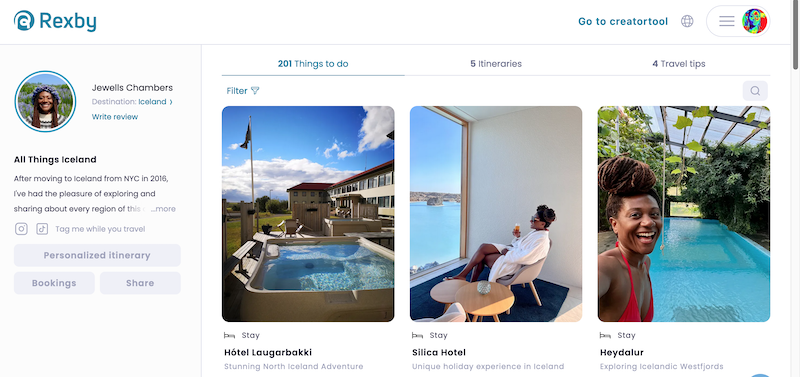
Another great resource is to grab full access to my Iceland map. This map was created for those who want to pick out places and hidden gems around Iceland to make up their own itinerary or add to one that they already created.
With full access, you get over 280 places that I recommend in Iceland, along with four itineraries to use for planning your trip. Those itineraries include a 10-day Ring Road trip, a 3-day South Iceland trip, The Famous Golden Circle and a Reykjanes Peninsula Day Trip.
A one-time purchase gives you lifetime access, which includes any updates I make to the map.
Here is a link to my Iceland map: rexby.com/jewells/Iceland.
Random Fact of the Episode
Óshlíð, the historical road connecting Bolungarvík and Hnífsdalur, began construction in the 1950s and was once the sole link for Bolungarvík residents to Iceland’s road network. As of 2010, the route no longer accommodates vehicle traffic due to the opening of the new Bolungarvík tunnel. However, Óshlíð has been repurposed as a scenic outdoor area for recreation. The smooth pavement provides ideal conditions for cyclists and runners seeking a nature immersion. The imposing cliffs towering 300 to 400 meters above can make one feel quite diminutive.
Óshlíð is notorious for its challenging road conditions, with frequent avalanches, rockfalls, and debris. Parts of the road have deteriorated due to harsh weather and coastal erosion. Consequently, tourists are urged to exercise caution and park their cars at either end of the pass. Driving on this road is not advisable as accidents are not covered by insurance for either vehicles or their occupants.
For a memorable experience, Óshlíð is particularly recommended during the luminous summer evenings when the sunset views are unparalleled. Informational signage is available at Hnífsdalur, marking the starting point of the Óshlíð route. There, visitors can also find a quaint spot to enjoy a coffee before walking towards the sunset
Icelandic word of the episode
Sundafyllir – Strait Filler is the nickname for Þuríður
Share this with a Friend
Facebook
Email
TwitterLet’s Be Social
Youtube
Tiktok
Instagram
Facebook
Þakka þér kærlega fyrir að hlusta og sjáumst fljótlega.
10 May 2024, 5:10 pm - Rökkvi Vésteinsson on Using LingQ to Learn Languages & More
Rökkvi Vésteinsson was born in 1978 in Iceland. He had a multicultural upbringing, living in Chicago at age 11, and spending summers in Denmark and Sweden during his teens. By age 20, he was fluent in four foreign languages, thanks to his travels and a stint as an au pair in Germany.
Rökkvi began his professional journey guiding one-day tours from Reykjavík to Kulusuk, Greenland at 23, leveraging his language skills in English, German, and Danish. He simultaneously embarked on a career in stand-up comedy starting in 2003.
After completing degrees in Biochemistry and Computer Science at Háskóli Íslands, he worked in Montreal as a programmer and software tester from 2004-2005, where he continued his comedy career. He also intermittently guided tours in Greenland and Iceland.
In 2017, Vésteinsson transitioned to full-time tour guiding, leading a variety of tours across Iceland, including multi-day and cruise ship tours, distillery tours, and city walks in Reykjavík. His guiding languages expanded to include Icelandic, English, German, Swedish, Danish, Norwegian, Dutch, and French, reflecting his continuous language learning.
Vésteinsson’s passion for languages led him to LingQ in 2019, where he learned French and other languages to literacy. He collaborated with LingQ’s CEO, contributing significantly to their Icelandic resources and successfully advocating for free Icelandic learning on the platform.
Today, Vésteinsson continues to add educational content to LingQ and promotes language learning in Iceland. He also performs comedy in multiple languages across various countries, showcasing his diverse linguistic and cultural fluency.
Have a Question for Rökkvi
Through my link for “Ask Jewells Anything”, feel free to submit a question for Rökkvi. Please add into the description box that it is for him.
Learn More About Greenland
During the interview, Rökkvi and I talked about Greenland. Here is an episode where you can learn more about modern Greenland and how some Greenlandic activist are working to reclaim their culture.
Share this with a friend
Facebook
Email
TwitterLet’s Be Social
Youtube
Tiktok
Instagram
Facebook
Þakka þér kærlega fyrir að hlusta og sjáumsy fljótlega.
9 May 2024, 8:44 pm - 6 minutes 27 secondsIceland’s Loch Ness Monster – Folklore Friday
Where Iceland’s Loch Ness Monster Lives
Lagarfljot, nestled in eastern Iceland, is not just a lake but a river channel flowing from the majestic Vatnajokull glacier to the sea. This secluded area carries a mysterious aura, providing fertile ground for local folklore.
Visitors from the east of Iceland or those who have journeyed to Reykjavik might share tales of a monstrous inhabitant lurking in the murky depths of the lake, reminiscent of Scotland’s famous Loch Ness monster.
This creature, known as Lagarfljotsormur, a name that challenges even the bravest linguist, translates to “the Lagarfljot worm.” Reported sightings by locals have captured this enigmatic being on film, where it appears as an elusive, moving shape beneath the water’s surface.
How Lagarfljótsormur Came to Be
According to legend, the origins of this creature stem from a young girl’s encounter with greed. Gifted a gold ring by her mother, she sought advice on how to maximize its value. Her mother relayed a local myth: placing a worm on gold would make the gold multiply.
The girl, hoping to increase her wealth, locked a worm in a chest with the ring. Contrary to her hopes, the worm grew exponentially. Overcome with fear upon discovering the worm’s transformation, she hurled the chest into the lake.
Since that day, the creature, resembling a giant sea snake, has surfaced sporadically, captured in fleeting video glimpses that stoke the fires of legend and debate. To some, these images are proof of its existence; to others, they are mere fragments of myth. The true nature of Lagarfljotsormur remains shrouded in mystery, its legend undiminished by time.
Random Fact of the Episode
There have been numerous people that claim to have seen this giant worm and there was even a video that came out once that was said to be footage of it.
Icelandic Word of the Episode
Lagarfljótsormur – the Lagarfljot worm
Share This With a Friend
Facebook
Email
TwitterLet’s Be Social
Youtube
Tiktok
Instagram
Facebook
Þakka þér kærlega fyrir að hlusta og sjáumst fljótlega.
3 May 2024, 5:11 pm - 18 minutes 4 secondsWhat It‘s Like to Snorkel Between Continents in Iceland‘s Silfra Fissure
Have you ever imagined swimming between two continents, touching the jagged edges of the earth’s crust beneath crystal-clear water? I had the unforgettable experience of snorkeling in Silfra Fissure, located in the heart of Thingvellir National Park, Iceland.
This unique adventure is available all year round, and whether you visit during the chilly embrace of December or the milder days of April, like I did, it’s an exhilarating experience not to be missed.
Arctic Adventures is a premier travel company in Iceland, offering a wide array of day and multi-day tours that showcase the breathtaking natural beauty of this volcanic island.
From snorkeling and glacier hiking to exploring the eruptive landscapes, they ensure a memorable and safe adventure for all. I’ve partnered with them for this post, and by using my code Iceland10, you can save 10% on any of their tours. Check out their offerings at adventures.is and plan your next epic journey!
What is Silfra Fissure in Thingvellir National Park in Iceland?

Silfra Fissure is a remarkable rift formed between the North American and Eurasian tectonic plates. This gap widens slightly each year, filled with glacial meltwater that is filtered through underground lava for nearly a century before it emerges as some of the clearest and freshest water on earth. Snorkeling here, you are literally floating between continents, in water visibility that extends up to 100 meters (about 328 feet), making it one of the top dive sites in the world.
My Arctic Adventure Begins

My journey began in the historic Thingvellir National Park, just about an hour’s drive from Reykjavik. I chose to drive myself to the meeting point, parking in Lot 5 and walking a short distance to where Arctic Adventures had set up. It was a brisk 10 degrees Celsius in April—a perfect day for snorkeling.
After a quick registration and waiver signing, the team helped us suit up. We were advised to wear thin thermal layers and thick wool socks under provided thick onesie thermal suits. Over these, they layered us into snug dry suits complete with gloves, a dry suit material face mask, snorkel mask, and fins.
Given the water temperature hovers around 2-3 degrees Celsius, these dry suits were crucial for keeping our core body temperatures stable. And yes, take advantage of the restrooms before you suit up—it’s a lot easier!
The Snorkeling Experience in Silfra Fissure

The walk to the water’s edge was brief, and entering the water was seamless. Visibility was phenomenal; we could see the divers below us looking as if they were hovering just feet away due to the clarity of the water. A soft current gently pulled us through the fissure, meaning we could enjoy the surreal surroundings without much effort.
The guide even snapped photos during our adventure, which were later available for download—truly epic shots that captured the ethereal blue of the waters, which are so pure you can drink from them.
Warmth After the Chill
Post-snorkel, we were treated to hot chocolate or tea and cookies, a welcome treat that helped warm us from the inside out. While the dry suits did an excellent job overall, my hands did feel the chill, especially my left one, which got uncomfortably cold. Fortunately, the sunny weather helped in warming up quickly once we were out of the water
Overall Impressions
Despite the minor chill, the experience was nothing short of magical. Snorkeling at Silfra with Arctic Adventures was a highlight of my adventures in Iceland—a truly unique experience where you can float between two worlds. It’s something I’d recommend to anyone visiting Iceland, no matter the season.
For more information on booking your own adventure and to utilize discounts, check out the “Trip Planning Help” tab at the top of my website allthingsiceland.com. Don’t forget to use Iceland10 to save on your booking with Arctic Adventures.
Here’s to your next adventure—may it be as breathtaking as snorkeling in Silfra!
Random Fact of the Episode
Silfra and other fissures in the park were created after an earthquake in 1789. The water in the fissure is meltwater from the nearby Langjökull glacier. After melting from the glacier, it takes a long journey through underground lava fields before reaching the fissure.
It’s approximated that it takes about 30-100 years for the glacier melt water to flow about 31 miles or 51 kilometers to the fissure. The water is not only crystal clear, but also absolute delicious to drink.
Icelandic Word of the Episode
Silfra – silvery
Share this with a Friend
Facebook
Email
TwitterLet’s Be Social
Youtube
Tiktok
Instagram
Facebook
Þakka þér kærlega fyrir að hlusta og sjáumst fljótlega.
1 May 2024, 7:02 pm - 7 minutes 14 secondsThe Icelandic Ghost that Haunts South Iceland – Folklore Friday
This episode is part of my Folklore Friday series, where I am sharing fascinating stories from Icelandic folklore on Fridays throughout 2024.
How Rusty “The Brown One” Became a Ghost
Rusty is a boy that is the main character of this story. According to the legend, he was 16 years old in the late 1700s in Iceland, and one day is he was out walking during a bad storm. Unfortunately, Rusty only had rags on and it was hard for him to find shelter.
At one point he finally found a farm, knocked on the door and asked the farmer if he can stay there until the storm had passed. To Rusty’s surprise, the farmer turned him away. Rusty decided to continue on walking in the storm and sadly he ended up drowning in a large body of water.
After he died, I guess his ghost made the choose to come back and haunt the farmer tha denied him shelter on that fatal night. However, he didn‘t just haunt the farmer. He haunted the family of the farmer for generations. So, if anything went wrong it was blamed on Rusty, the Brown One.
Some examples include marriages not working out, farm equipment breaking, things going missing and so on. Apparently, Rusty‘s ghost was not satisfied with just haunting the family because it‘s said that he started to haunt travelers as well on the south coast.
Rusty Formed a “Ghost Gang”
A young woman that died in a similar way to Rusty ended up joining Rusty as a ghost to haunt travelers. In an even weirder twist to the story, the ghosts of Rusty and the young somehow caused the death of another person. This individual also became a ghost and joined their ghost gang to haunt people. If you plan to travel along Iceland‘s South Coast, know that there is a chance that you might be haunted by this trio of ghosts.
Random Fact of the Episode
Ghost stories are very popular in Icelandic folklore. Every region has a plethora of stories about ghosts, mostly people who we might consider to be wronged in some way, who come back to haunt people. I have some fascinating ones to share in the near future, so keep your eye out for that.
Icelandic Word of the Episode
Ghost – draugur
Share this with a Friend
Facebook
Email
TwitterLet’s Be Social
Youtube
Tiktok
Instagram
Facebook
Þakka þér kærlega fyrir að hlusta og sjáumst fljótlega
26 April 2024, 5:12 pm - 28 minutes 8 secondsAsk Jewells Anything About Iceland – Response Episode 3
This is the third response episode for my new segment “Ask Jewells Anything About Iceland”. Thank you to everyone who sent in questions and if you would like to submit a question, you can do it here.
1. Should I exchange a small amount of currency before I leave? I have heard that Iceland is a cashless society, but I am thinking about tour guide tips or random purchases.- Christina
Iceland is not yet a cashless society, but we are certainly heading quickly in that direction. It isn’t necessary to take out cash in the local currency because debit and credit cards are the preferred method of payment. Also, tipping is not expected or encouraged because companies pay their employees livable wages for their work. You can, of course, take out cash to tip your guide or make random purchases if you prefer to pay that way but that’s up to you because it is not required.
2. Hi, I have another question! You wear such beautiful Icelandic sweaters on your Instagram. Where should I shop when I come in the spring? Somewhere that has really nice ones and doesn’t jack up the prices for tourists? – Alison
Kolaportið is flea market by the old harbor that is only open during weekends. There are some vendors there that are selling handmade Icelandic sweaters for a decent price.
Another place is the Handknitting association of Iceland. They have two locations in Reykjavík and all of their sweaters are handknit in the country. One helpful tip is to make sure you get the appropriate form at the store to get the 24% VAT (Value added tax) back at the airport when you leave the country. Iceland has that tax included in the price but they refund it for tourists on certain items.
3. “Hi Jewells,
I have recently discovered your podcast, and have been binge listening to episodes to prepare for my upcoming trip in May! ( I am so excited!) I am learning so much, and I appreciate hearing about your experiences! Thank you!
You mentioned that eating in restaurants is quite pricey in Iceland for a variety of reasons, including allowing restaurant owners to be able to pay their employees a living wage. Is it still customary to leave a tip for waitstaff? If so , is the recommnded amount the same as the US? (20-25%)
Thank you for taking the time to read my question.” – Vickie
The great news is that tipping is not part of the culture in Iceland, so you don’t have to factor in any % to your bill. This applies in every place, including cafes.
4. Hi Jewells! My family will be there in June. Is there a traditional event for summer solstice? – Ruth
Unlike other Nordic nations, Iceland does not have nationwide celebrations for the summer solstice. One place that has an annual event is in the far north. It is an island called Grímsey. They have a multiple day festival to celebrate the long and seemingly endless summer day. Here is where you can find the program for last year. I assume they will have the 2024 program soon. Please note that you need to take either a boat or plane to reach Grímsey. I have heard that many people get sea sick on the boat, so keep that in mind if you choose that option.
5. “Thank you so much for your informative podcasts! My wife and I are planning to visit Iceland for the first time in October 2025. We believe that the best way to experience a new place is to immerse ourselves in it and to attempt to learn the language. What was your experience in learning the Icelandic language, and what do you recommend is a good way/resource to learn the language?” – Gerald
My recommendation for learning Icelandic is to get as much input of the language as you can in a way that you can relate to. Meaning, it helps to see shows or read text at your level or slightly above that you can understand enough to start internalizing it. Input that is repetitive can help you to become more familiar wth certain sounds and phrases. As a visitor, my episode on Useful Icelandic Phrases for Visitors is a good place to start. The other resources I listed below can help too.
- LingQ is free for those learning Icelandic
- Viltu læra íslensku
- Íslenska fyrir alla
- Drops – the only one on the list you have to pay for
6. Hi Jewels! Have you been to the “Sorcery Festival” in Hólmavík? It takes place in late April and looks really interesting. – Ruth
I have yet to attend that festival but it sounds like a lot of fun. If you get a chance to attend, Ruth, I would love to hear about your experience.
7. Hi Jewells! I was hoping you could talk about the tipping culture in Iceland. Thanks! – Julia
Thankfully, Iceland does not have a culture of tipping. Due to unions negotiating on behalf of workers for fair and livable wages from employees, tipping is not necessary or encouraged in Iceland.
8. Hi Jewells! Do you have a suggestion for whale watching in the south of Iceland? I won’t have enough time to make it to Húsavík, but I still want to go. I’m visiting in June and torn between whale watching in Reykjavik or Olafsvik.- Casey
Yes, whale watching from Reykjavík can be a lot of fun. You might see Minke whales, humpback whales, porpoises and dolphins. If you are looking for a company that does it from the harbor in the city, then I recommend Arctic Adventures. You can use my code Iceland10 to save 10% on any of their tours, including the whale watching one.
9. What itinerary would you suggest for a person with only 8 full days in Iceland who wants to see as much as possible. – Marilyn
There are many factors that come into play when planning a trip in Iceland, including when you plan to come, what kind of budget you have, the accommodations you prefer and so on. My suggestion, without knowing any of that information up front, is to split the eight days up as the following:
1 Day in Reykjavik when you arrive
1 Day on the Snæfellsnes Peninsula
2 Days in North Iceland
1 Day around the Golden Circle
2 Days in the South/Southeast
1 Day either back in Reykjavik or the Reykjanes Peninsula
If you would like to discuss your trip in more detail, feel free to book a video consultation with me and I can help you plan a more personalized itinerary.
10. Which ice caves and glaciers have you visited and which ones are you favorites? – Ana
I like the Katla Ice Cave, Into the Glacier, and naturally forming ice caves that guides often find on the glacier during winter that do not have names because they are not expected to last into the summer. Arctic Adventures has tours like that and you can use my code Iceland10 to save 10% on any of their tours and activities.
11. My question is: What’s the meaning of the Icelandic phrases that you say at the end of each episode? I might have missed the explanation in one of your earlier episodes since I became only a regular listener a couple of months ago. I’ve always loved the sound of the Icelandic language and would love to know more about it, even though I’m not ready to commit to learning it yet 😀 – Jonas
The phrase I say at the end is „Þakka þér kærlega fyrir að hlusta og sjáumst fljótlega“. It means thank you kindly for listening and see you soon.
12. We will be driving all around Iceland for about 12 days. How much ISK would you recommend we bring? – Stephanie
In the podcast episode I go more in-depth into the numbers but for two people during summer I have an estimate of about $8,000. That is kind of on the conservative end.
Share this with a Friend
Facebook
Email
TwitterLet’s Be Social
Youtube
Tiktok
Instagram
Facebook
Þakka þér kærlega fyrir að hlusta og sjáumst fljótlega.
24 April 2024, 8:53 pm - 6 minutes 55 secondsA Wicked Troll that Enchanted Icelandic Priests – Folklore Friday
This episode is part of my Folklore Friday series, where I am sharing fascinating stories from Icelandic folklore on Fridays throughout 2024.
A Troll Lurking in Iceland’s East Fjords
Mjóifjörður (or narrow fjord) used to have up to 100 inhabitants centuries ago but it is now only about 14 people live there. During the winter it is common for the roads to be completely blocked off and the inhabitants can only be reached by boat.
The troll of this story was said to be around centuries ago when there were more people living in the fjord. She lived in a beautiful gorge called Prestagil. It‘s said tha the troll would use her magical powers to make the priests of the church in small farm called Fjörður go mad.
Priests Enchanted by a Hungry Troll
Her routine was to wait fo the pastor to be at the pulpit of the church on Sunday and then she would wave her hand outside the pulpit window. The pastor would see this and it would somehow enchant him to say:
Tear out my guts and my heart
Off to the gorge I’ll depart
Tear out my lust and my seed
To Mjóifjörður gorge I shall speed
After saying this, the priest would run out of the church as fast as he could into the gorge where the troll lived and was never seen again. Due to the Troll telling a traveler once that she was nibbling on the head of a former priest of the Fjörður, news spread that the troll was eating the men.
Several priests took the position over the years and each one disappeared after being enchanted by the troll. Naturally, priests became too afraid to serve there because they didn’t want to become Troll food.
A Brave Priest Comes Along
Finally, a priest volunteered even though he knew of the danger. What this priest did differently than the others was that he came up with a plan. Before his first mass, he assembled a group of men that normally attended the church.
He instructed them to do the following: When the troll tried to enchant him, six men will hold him back from running out of the church, another six will ring the church bells, and ten men will hold the church doors shut.
The fateful Sunday arrived and just as expected, the Troll waved her hand at the pulpit window. The priest immediately became enchanted and said the rhyme.
All of the men jumped into action. While the men held the priest back from fleeing the church, the other men rang the church bells like crazy. When the troll heard the bells she fled into the gorge and was never seen again.
Random Fact of the Episode
Klifbrekkufossar is a seven tiered waterfall in Mjóifjörður that is worth seeing if you are in the area and have time to drive into this fjord.
Icelandic Word of the Episode
Prestagil – Pastor’s Gorge
Share this with a Friend
Facebook
Email
TwitterLet’s Be Social
Youtube
Tiktok
Instagram
Facebook
Þakka þér kærlega fyrir að hlusta og sjáumst fljótlega.
19 April 2024, 7:17 pm - 1 hour 6 minutesLaura Alice Watt: An American Relocates to Iceland’s Remote Westfjords
Interviews are one of my favorite things to do for the podcast, so I was delighted when Laura was available to come on and share about her experience moving from the San Francisco Bay area to one of the most remote parts of the Westfjords in Iceland.
Background About Laura Alice Watt
Laura Alice Watt is a professor emerita of environmental history and policy at Sonoma State University in Northern California. She arrived in the Westfjords in July 2020 with a Fulbright-NSF Arctic Scholar grant to conduct historical research in Iceland, and decided to stay long-term. She teaches occasional courses at the University Centre of the Westfjords, where she also provides writing support for graduate students with their thesis projects.
Before taking early retirement from Sonoma State, she spent fifteen years as professor in the Department of Geography, Environment, and Planning, and also Graduate Coordinator for SSU’s Cultural Resource Management masters program. She now lives on the northern shore of Dýrafjörður with her two cats, and is an avid photographer and knitter.
Questions I Asked Laura During the Interview
- Where did you grow up in the US?
- What was your profession while living in the US?
- What inspired you to come to Iceland?
- When did you know you wanted to stay here?
- Why did you choose the Westfjords to live in Iceland?
- What do you like about living in Iceland?
- What do you dislike about living in Iceland?
- What do you miss from the US (if anything at all)?
- Do you ever see yourself moving back to the US?
- How has your Icelandic learning journey been since moving here?
- What advice do you have for people who want to move to Iceland?
- What is your favorite Icelandic word or phrase?
Icelandic Phrase of the Episode
Glöggt er gests augað – Keen is the eye of the guest
Share this with a Friend
Facebook
Email
TwitterLet’s Be Social
Youtube
Tiktok
Instagram
Facebook
Þakka þér kærlega fyrir að hlusta og sjáumst fljótlega.
17 April 2024, 2:15 pm - 6 minutes 51 secondsSkuggabaldur: Iceland’s Ferocious Shadow Cat – Folklore Friday
This episode is part of my Folklore Friday series, where I am sharing fascinating stories from Icelandic folklore on Fridays throughout 2024.
What is a Skuggabaldur?
The Skuggabaldur is a fascinating animal in Icelandic folklore. Whether or not this type of animal really exists is hard to say but there are some interesting stories about it. A Skuggabaldur is created when a female arctic fox and a male cat or Tom cat get together and procreate.
If a male arctic fox and a female cat procreate, it is called a Skoffín. However, we are just going to focus on the Skuggabaldur for this episode. These animals are known to have very intense bites that inflict a lot of pain and death. Guns are not much use against them unless you are using silver bullets.
The Most Popular Skuggabaldur Story
One day in the north, particularly near Blönduós, a Skuggabaldur had been inflicting a lot of damage on the livestock in the area. The farmers there decided to hunt it down. They did eventually find the animal in Blöndugil, which is a small canyon in the area. One of the hunters ended up stabbing it.
Before the Skuggabaldur was killed, it said to tell the Tom Cat at Bollastaðir that the Skuggabaldur had been stabbed in the canyon. The people that were witnesses to this thought it was quite strange that this creature had a message for a cat but whatever.
The person who ended up stabbing and killing the Skuggabaldur was staying in Bollastaðir that evening. As he was recounting his story about killing the Skuggabaldur, he repeated what the message the creature has said to tell the Tom Cat.
Well, there was a Tom Cat listening in the rafters to the story and when he heard what the Skuggabaldur had said, it lept down to attack the man. It sunk its claws and teeth deep into the man’s neck and would not let go. The only way to stop the cat was to chop off its head. By that time, the man was already dead. I don‘t know if the Tom Cat was a relative of the Skuggabaldur but it certainly got revenge for its death.
Random Fact of the Episode
There is a book called “Skuggabaldur” by a well-known Icelandic poet and author named Sjón. In English, the book is called „The Blue Fox“. I have yet to read it but I want to. Apparently, knowing about the Skuggabaldur creature gives some deep insight into understanding all that is going on in this book.
According to one reviewer of the book:
“The Blue Fox,” by Sjon, is a dark, yet playful and humorous fable about a kind man, an evil man, a simpleton, and a blue fox. It is about fate, life, and human nature. The novella deals with evil cloaked in religion and justice being delivered in mysterious ways. It is full of hidden meaning, subtlety, and delightful intellectually amusing diversions.”
Icelandic Word of the Episode
Skuggabaldur – roughly translates to a shadow cat
Share this with a Friend
Facebook
Email
TwitterLet’s Be Social
Youtube
Tiktok
Instagram
Facebook
Þakka þér kærlega fyrir að hlusta og sjáumst fljótlega.
12 April 2024, 6:38 pm - 16 minutes 59 secondsIcelandic Coffee Culture & Unique Cafés to Visit in Reykjavík
Iceland’s coffee culture is – deeply ingrained in the social fabric of Icelandic society. Along with being a drink that perks people up, grabbing a cup of coffee in Iceland is often a social interaction, where the drink is enjoyed in the company of others, many times in cozy settings. This communal aspect is so integral that offering coffee to guests is considered a basic hospitality gesture.
The Icelandic Coffee Scene in Downtown Reykjavík
Reykjavík, the heart of Iceland’s coffee scene, is home to a plethora of unique cafés, each with its own character and offerings, but bound by the common thread of quality and creativity.
Local cafes that offer high-quality coffee experiences thrive here. While there is no Starbucks or Dunkin Donuts in Iceland, even though Dunkin was here for a brief time, there is one international coffee chain called Joe & the Juice.
However, local cafes dominate the coffee scene and I’m going to share some of them that might interest you if you also happen to be a coffee lover. This is not an exhaustive list by any means but it’s a great starting point for enjoying the Icelandic coffee scene.
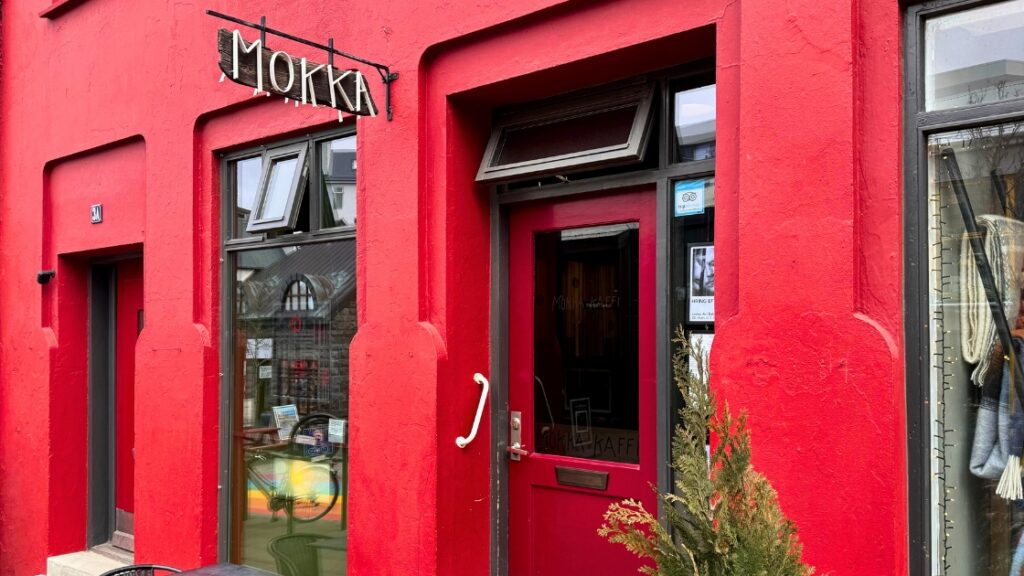
Mokka Kaffi
Mokka Kaffi is a testament to Reykjavík’s rich coffee history, being one of the city’s oldest cafés. Established in 1958, it was the pioneer in introducing the Italian espresso culture to Iceland. Beyond its historic significance, Mokka Kaffi has been a cultural hub for artists and writers and continues to be celebrated for its classic ambiance, monthly art exhibitions, and iconic Icelandic hot chocolate and waffles.
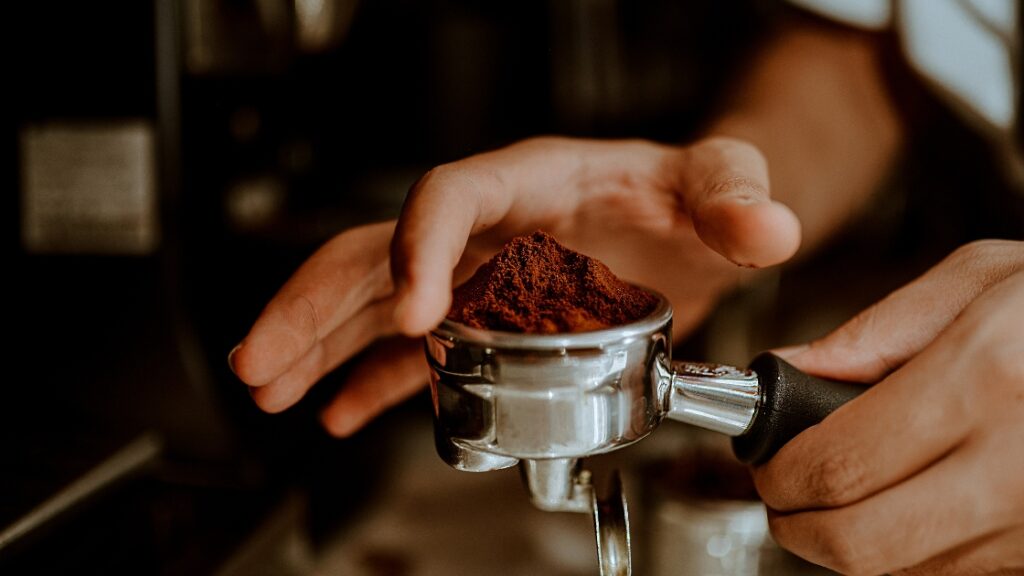
Reykjavík Roasters
Reykjavík Roasters, originally known as Kaffismiðja Íslands, emerged in 2008 and has since become a cornerstone of Reykjavík’s coffee culture. Their philosophy revolves around importing high-quality beans and roasting them meticulously to bring out the best flavors for coffee aficionados.
The café takes pride in sourcing its beans directly from farmers, particularly in Colombia, ensuring ethical practices and respect for both the environment and the people involved in coffee production. This direct relationship with coffee farmers reflects the café’s commitment to sustainability and ethical business practices.
Reykjavík Roasters has established itself as a hub for serious coffee lovers, offering a range of coffee without decaf options, emphasizing the pure coffee experience. The cozy atmosphere, combined with the café’s reputation for quality, makes it a place where people often share tables with fellow coffee enthusiasts, fostering a sense of community among its patrons.
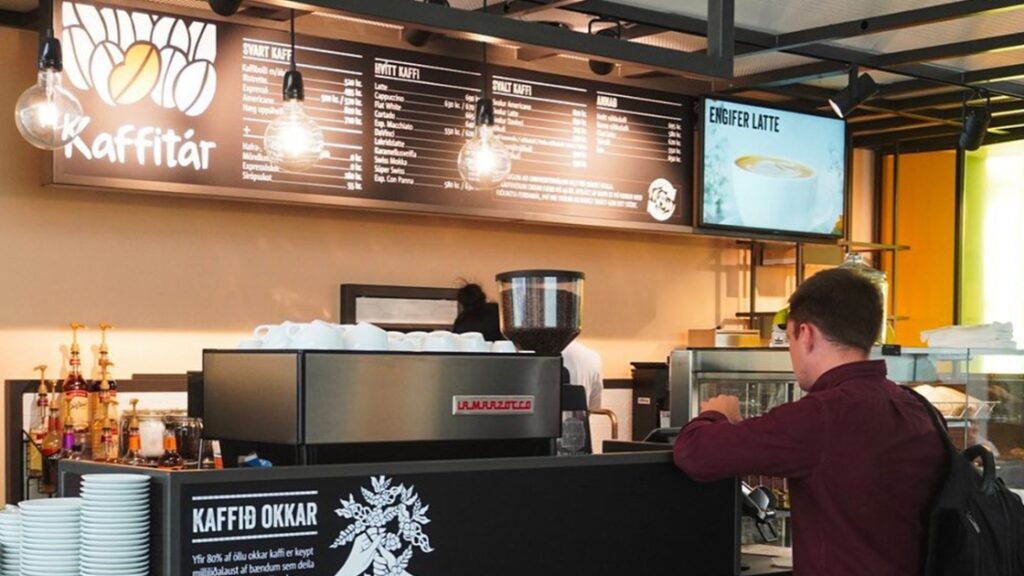
Kaffitár Coffee House
Kaffitár represents the modern evolution of Icelandic coffee, with a focus on sustainability and quality. As a leading coffee provider, Kaffitár sources its beans from renowned coffee-growing regions and is known for its espresso bars, seasonal drinks, and as a wholesaler of coffee. Their presence in supermarkets across Iceland allows both locals and visitors to take a piece of Icelandic coffee culture home.

Café Babalú
Café Babalú, with its eclectic charm and vibrant orange exterior, stands out as a cozy retreat offering a range of coffee, cakes, and desserts. Known for its friendly atmosphere, it’s a place where one can enjoy unlimited refills of black coffee, making it a favorite among both locals and tourists seeking a warm, welcoming space.
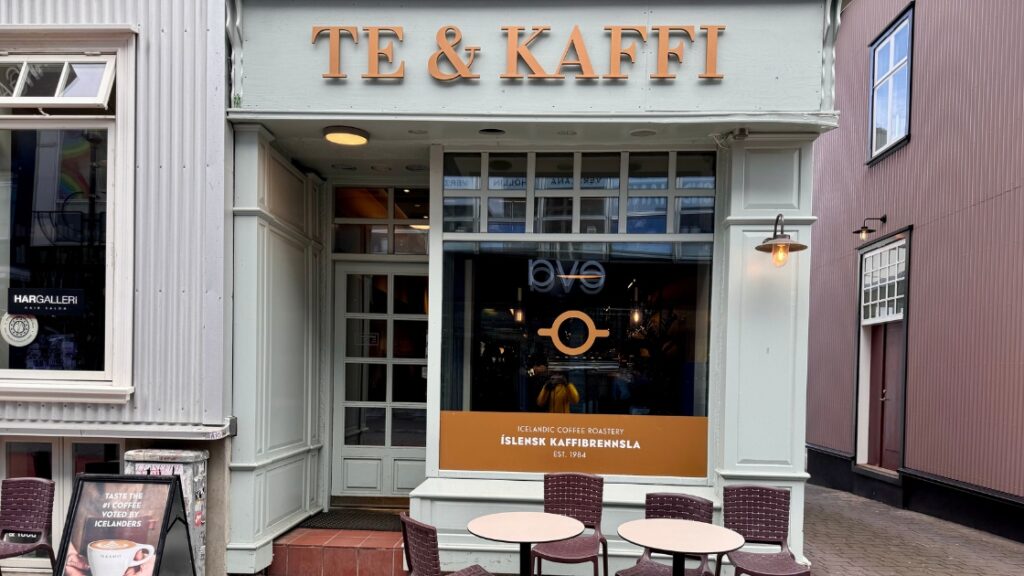
Te og Kaffi (Tea & Coffee)
Te og Kaffi is a family-owned chain, which started in 1984, that has significantly contributed to what many call the Icelandic coffee revolution, marrying tradition with innovation to serve some of the finest coffee in the region.
With eight cafés spread across the capital, Te og Kaffi is renowned for its commitment to quality, from sourcing beans to the art of brewing, ensuring each cup reflects their dedication to the craft. Their baristas are not just skilled but also passionate about coffee, providing a warm and welcoming experience to all who visit.
Beyond just serving coffee, Te og Kaffi is deeply involved in the coffee-making process, operating their own roastery and offering a wide range of coffee-related products and training courses aimed at enhancing brewing skills and knowledge.

Reykjavík Röst
Reykjavík Röst is a lovely café located by the Old Harbour in Reykjavík in a beautiful turquoise colored house. It was established in the summer of 2017, and prides itself on serving quality coffee, including traditional options and innovative creations.
Some of the innovative ones include Keto coffee and beverages infused with Chaga and Reishi mushrooms, whimsically named “Magic Mushroom.” Their focus on quality extends to their food offerings as well, with a special emphasis on sourdough bread sandwiches and homemade soups, using locally sourced ingredients like Icelandic smoked salmon and lamb.
What sets Reykjavík Röst apart is not just its culinary offerings but also its cozy and welcoming atmosphere, enhanced by stunning views of the harbor. The café also takes pride in its selection of Icelandic cakes, traditional pastries. For those who enjoy a good brew, Reykjavík Röst has a selection of local beers on tap, cocktails, and a full bar available in the evenings, making it a perfect spot for both coffee aficionados and those looking to enjoy a relaxing evening by the harbor.

Kattakaffihúsið – The Cat Coffee House
Kattakaffihúsið, Reykjavík’s first cat café, adds a unique twist to the Icelandic coffee culture. While the concept of a cat café, originally popularized in Japan, might seem unusual in the context of Iceland, Kattakaffihúsið has found its place by offering not just a cozy café experience but also an opportunity for cat adoption.
This concept addresses the human desire for animal companionship, which in densely populated cities like Tokyo led to the creation of spaces where people could enjoy the company of pets they couldn’t have at home due to space or legal restrictions. Kattakaffihúsið brings this idea to Reykjavík with a charitable angle, aiming to provide a safe haven for cats until they find a permanent home.

The Reykjavík Cat Walk Tour
If you are a cat lover or are even just intrigued to see where some of these feline cuties hang out, then I think you’ll enjoy the Reykjavik Cat Walk Tour hosted by Your Friend in Reykjavik, a tour company that prides itself on offering authentic local experiences.
You can use my code ALLTHINGSICELAND (in all caps) to save 10% on your Cat Walk Tour and over 45 other tours you book with Your Friend in Reykjavik.
I have personally done this walking tour and loved it. It’s surprising how many stops there and all of the adorable cats that can be found in their usual spots, if you know where to look.
There are even cat murals and, of course, a visit to the Cat Café. This café takes in cats that need a home and they roam freely around the cafe as people enjoy their drinks and food. The whole café is decorated in a cat theme, and it is incredibly cute. It is up to the cats if they want to interact with guests and a decent number of them do. During the visit to the cafe, some delicious treats like hot cocoa or coffee and cookies are included for tour participants. This walking tour is a delightful way to learn about Reykjavik from a different perspective.
If you are curious about why dogs were banned in Reykjavík, check out this podcast episode.
Why it is worth having coffee in Reykjavík, Iceland
Each of these cafés contribute to the tapestry of Icelandic coffee culture, which is characterized by its preference for quality over quantity, the social experience of coffee drinking, and the innovative use of local and imported beans roasted to perfection within the country.
This dedication to quality and community has fostered a coffee scene that is both diverse and intimate, offering an array of experiences that reflect the spirit and warmth of Iceland itself.
Random Fact of the Episode
It is said that Árni Magnússon was the first man to drink coffee in Iceland. I guess he was quite the trend setter because the drink surged in popularity. There is an estimate that from 1819 to 1855 that imported coffee went from 5 tons per year to 213 tons per year!
Icelandic word of the episode
kaffi – coffee
Share this with a friend
Facebook
Email
TwitterLet’s Be Social
Youtube
Tiktok
Instagram
Facebook
Þakka þér kærlega fyrir að hlusta og sjáumst fljótlega.
10 April 2024, 11:33 pm - 6 minutes 39 secondsThe Devious Corpse of Finnur the Sorcerer
This episode is part of my Folklore Friday series, where I am sharing fascinating stories from Icelandic folklore on Fridays throughout 2024.
Why Finnur is a Feared Sorcerer
A sorcerer named Finnur that lived a long time ago. So many people feared him and when he died no one wanted anything to do with the death, such as preparing the body or sewing up the shroud, which covers the dead body. Finally, one woman said she will sew the shroud. When she was doing it, some weird stuff was happening. It seems that even in death, Finnur had found ways to terrorize people. The antics that happened while she was trying to sew the shroud made her go mad.
Another Brave Woman Steps Up to Prep Finnur’s Body
After that, people were, of course, even more resistant to getting involved in prepping his body. However, another woman stepped forward and said she was up to the task. While she was sewing up the shroud it came to a point where she need to disconnect the needle from the thread, she witnessed something strange.
The corpse of Finnur said to her “You have yet to bite the needle free from the thread”. Instead of being scared, the woman boldly said, “I don’t plan on biting it. I plan on yanking it free.” That is exactly what she did and after that she took the needle she had used, broke it into two pieces and stuck it into the corpses’ feet. After doing that, the corpse of Finnur stopped playing antics nor did it bother anyone else.
I don’t know if putting needles into a corpses’ feet has some sort of significance, but I do think it is interesting that this specific action would shut him up.
Random Fact of the Episode
I am pretty sure that in a previous episode, I have spoken about the Icelandic Sorcery and Witchcraft Museum in Hólmavík in the Westfjords of Iceland. What might surprise people is that most of the people persecuted for doing magic in Iceland were men. At the museum, they showcases the documented executions of people who did magic and most of them happened in the Westfjords.
Icelandic Word of the Episode
Galdramaður – sorcerer
Share This With a Friend
Facebook
Email
TwitterLet’s Be Social
Youtube
Tiktok
Instagram
Facebook
Þakka þér kærlega fyrir að hlusta og sjáumst fljótlega.
5 April 2024, 9:26 pm - More Episodes? Get the App
Your feedback is valuable to us. Should you encounter any bugs, glitches, lack of functionality or other problems, please email us on [email protected] or join Moon.FM Telegram Group where you can talk directly to the dev team who are happy to answer any queries.
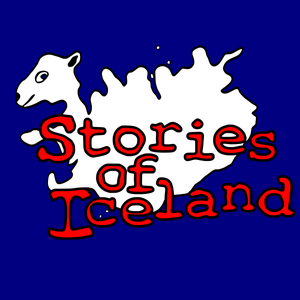 Stories of Iceland
Stories of Iceland
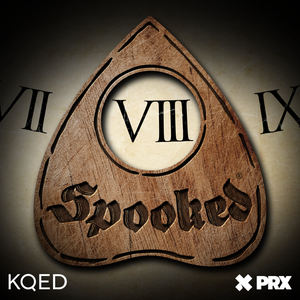 Snap Judgment Presents: Spooked
Snap Judgment Presents: Spooked
 This American Life
This American Life
 Travel with Rick Steves
Travel with Rick Steves